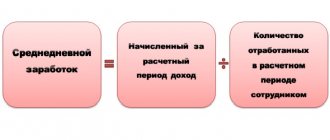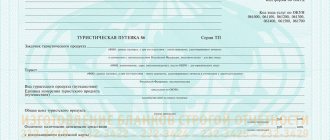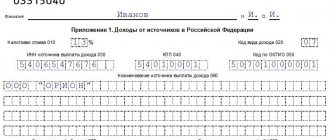Features of tire accounting
Tires are taken into account depending on the conditions of their purchase:
- together with the car (and then their cost is included in the price of the OS);
- or separately from it (in this case they act as independent objects of inventory accounting).
Tires are the most worn-out vehicle components. Their replacement is necessary when worn, damaged and when the season changes. During the operation of the vehicle, the company changes tires and, if necessary, completely replaces worn tires. Operating mileage standards for tires are set by the manufacturer (letter of the Ministry of Transport of the Russian Federation dated August 24, 2012 No. 03-01/10-2830sh).
Based on the parameters (brand, model, size), they create separate accounting for tires in accounting: new, seasonal, retreaded.
To summarize information on them, use account 10 subaccount “Spare parts”, where warehouse information on the availability and movement of reserve and used tires is generated. Tires submitted for reporting to the responsible person (usually a garage mechanic) are also taken into account on the account. 10, but separately from warehouse availability, but as an asset for which the responsible employee is responsible.
Tax accounting of tires
EPS system in a modern car. Operating rules
When purchasing a car, the price of installed and spare tires is combined with the initial cost of the vehicle (Tax Code of the Russian Federation, Article 257). These spare parts do not appear on the accounting accounts as separate objects. Tires purchased separately are not included in the purchased vehicle and are not added to its cost. Here, tax accounting of spare parts is regulated by the Tax Code of the Russian Federation:
- Art. 254 (payer’s expenses for production and economic needs);
- Art. 260 (restoration of fixed assets);
- Art. 264 (maintenance and use of official transport).
So, for example, according to tax legislation, separately purchased spare parts can be taken into account as material expenses for the purchase of materials necessary for the maintenance of fixed assets. That is, tires in such cases are considered spare parts for a car, which are recorded at their cost among inventories. The costs of their repair can be classified as other.
Expenses are considered for tax purposes in the tax period valid at that time. All expenses under the accrual method are recognized at the time the tires are assembled on the car. Spare parts removed from vehicles are not considered returnable waste or residual stock.
| Category of operating conditions | Outside the suburban area (more than 50 km from the city border) | In small towns (up to 100 thousand inhabitants) and in the suburban area | In large cities (more than 100 thousand inhabitants) | National economic and administrative significance of the highway |
| I | D1 -P1, P2, P3 | — | — | I a - main highways of national importance, including for international traffic |
| I b - highways of national (not classified as category I a), republican, regional (territorial) significance | ||||
| II | D1-P4;D2 -P1, P2, P3, P4D3-P1, P2, P3 | D1 -P1, P2, P3, P4D2-P1 | — | Highways of national (not classified as categories I a, Ib), republican, regional (territorial) significance |
| III | D1-P5D2-R5D3-R4, R5D4-R1, R2, R3, R4, R5 | D1 -P5D2 -P2, P3, P4, P5D3 - P1, P2, P3, P4, P5 D4-P1, P2, P3, P4, P5 | D1-R1, R2, R3, R4, R5 D2 - R1, P2, P3, P4D3-R1, R2, R3D4-R1 | Highways of national, republican (regional) (not classified as categories I a and II), roads of local importance |
| IV | D5-R1, R2, R3, R4, R5 | D5-R1, R2, R3, R4, R5 | D2-R5D3-R4, R5D4 -P1, P2, P3, P4, P5D5 -P1, P2, P3, P4, P5 | Highways of republican regional (territorial) and local significance (not classified as categories I b, II, III) |
| V | D6 - P1, P2, P3, P4, P5 | Local roads (except for those classified as categories III, IV) |
Rules for accounting and storage of diesel fuel and motor oils during the operation of diesel power plants New accounting of fuel and lubricants consumption rates of fuels and lubricants, rates of natural loss of petroleum products. Author Starostin S.N. Publishing house MCFR
How to capitalize car tires in accounting
An enterprise has the right to develop its own “primary” accounting forms for the receipt and issue of tires, as well as establish the procedure for filling them out. The company's management establishes a list of employees responsible for the acceptance and transfer of tires into operation, and approves the procedure for controlling the use of these assets.
For each tire installed on a vehicle (new, used, refurbished), it is necessary to create a work record card using standard form No. 424-APK, card No. M-17 for accounting for inventory items, or developing another form acceptable to the company. Initially, information about the tire and any defects is entered into it, and then the mileage values are filled in monthly. Upon completion of operation, it indicates the reasons and date of dismantling, mileage, further direction of the tire - for restoration, repair, scrap, etc. Often the card replaces the act of writing off the tire and confirms the need to put another tire into service.
Certificate of write-off of tires sample filling
In the accounting of a budgetary institution, when replacing worn or damaged tires, the following entries are made:
Debit 0.401.20.272 (0.109.60.272, 0.109.70.272...) Credit 0.105.26.440 (0.105.36.440) – tires installed to replace worn or damaged ones were written off from the balance sheet; Debit 09 – tires installed to replace worn or damaged ones are included in the balance sheet (provided that the tires are included in the list established by the accounting policy). This procedure is established by paragraph 37 of Instruction No. 174n, Instruction No. 157n (accounts 105.00, 109.00, 401.20, off-balance sheet account 09).
When replacing tires seasonally, the following entries are made in the accounting records of a budgetary institution:
Debit 0.105.36.340 Credit 0.105.36.340 – tires for the summer (winter) season were put into service (returned to the warehouse) (based on the invoice requirement in form No. M-11 (f. 0315006)) (clause 35 of Instruction No. 174n).
Car tires are products with limited mileage. After use for a certain time, old tires should be written off and replaced with new ones. If an ordinary car owner can simply change tires at a car service center and return them under the recycling program, then budgetary organizations have to maintain documentation that will reflect the compliance of all operations with road safety requirements and economic legislation.
Tires that cannot be used due to wear or damage are subject to write-off:
- if the tread is worn out and its pattern rises by less than 1.6 mm (for passenger cars), 1 mm (for trucks), 2 mm (for buses);
- if the specified period of use has passed or the tires have covered the maximum possible number of kilometers;
- if damage is found on the tire exposing the cord;
- if the disks and rims of the wheels are damaged (the shape is broken, there is visible damage in the form of cracks, there are defects in fastening).
Operations to write off unusable tires must be reflected in accounting documents. Today, there is no legislation that fully regulates the process of decommissioning tires, and most organizations either follow the recommendations of temporary standards or independently determine the service life of these products.
It is important to understand that using worn or damaged tires is dangerous.
How to account for tires in accounting
The purchase, transfer to work and other operations carried out with this property are reflected in accounting by the following entries:
| Operations | D/t | K/t |
| Purchase of tires (payment) | 60 | 51 |
| Arrival at the warehouse | 10/Spare parts in stock | 60 |
| VAT on purchased tires | 19 | 60 |
| VAT deductible | 68 | 19 |
| Transfer into operation (under report) | 10/Spare parts in circulation | 10/Spare parts in stock |
| Tire write-off | 20,25,26,44,91 | 10/Spare parts in circulation |
| Change of seasonal tires (reception for storage) | 10/Spare parts in circulation | 20,23,25,26,44 |
| To control the movement of tires, their accounting can be organized on an off-balance sheet account | 012 | — |
Classification of operating conditions
| Category of operating conditions | Outside the suburban area (more than 50 km from the city border) | In small towns (up to 100 thousand inhabitants) and in the suburban area | In large cities (more than 100 thousand inhabitants) | National economic and administrative significance of the highway |
| I | D1-P1, P2, P3 | — | — | Ia - main roads of national importance, including for international traffic |
| Ib - highways of national (not classified as category Ia), republican, regional (territorial) significance | ||||
| II | D1-R4; D2-P1, P2, P3, P4 D3-R1, R2, R3 | D1-P1, P2, P3, P4 D2-P1 | — | Highways of national (not classified as categories Ia, Ib), republican, regional (territorial) significance |
| III | D1-P5 D2-R5 D3-R4, R5 D4-R1, R2, R3, R4, R5 | D1-P5 D2-P2, P3, P4, P5 D3—P1, P2, P3, P4, P5 D4-R1, R2, R3, R4, R5 | D1-R1, R2, R3, R4, R5 D2—P1, P2, P3, P4 D3-R1, R2, R3 D4-R1 | Highways of national, republican (regional) importance (not classified as categories Ia and II), roads of local importance |
| IV | D5-R1, R2, R3, R4, R5 | D5-R1, R2, R3, R4, R5 | D2-R5 D3-R4, R5 D4-P1, P2, P3, P4, P5 D5-P1, P2, P3, P4, P5 | Highways of republican regional (territorial) and local significance (not classified as categories Ib, II, III) |
| V | D6 - P1, P2, P3, P4, P5 | Local roads (except for those classified as categories III, IV) |
Accounting for winter tires in accounting
Changing seasonal tires is considered as an event to maintain normal vehicle performance. Seasonal tires removed from the vehicle are delivered to the warehouse. They are neither idle assets, since they are periodically exploited, nor returnable waste, since they have not lost their consumer qualities.
Winter tires arrive at the account. 10, and given that during the work they are returned to the warehouse partially worn out, the company has the right to restore not the full price, but reduced by the share of wear. Typically, the degree of wear is determined in proportion to the available mileage, the values of which are recorded in the registration card. The cost of a returned seasonal tire (RST) is determined by the formula:
Svsh = (Npr - Fpr) / Npr x Ssh,
where Npr is the tire mileage rate;
Fpr – actual mileage;
Сш – cost of the tire.
CLASSIFICATION OF MOTOR VEHICLES
Motor vehicles (ATS) are divided into passenger, cargo and special.
Passenger vehicles include cars and buses, freight vehicles include trucks, trailers and semi-trailers, incl. specialized, special vehicles include vehicles designed to perform various, mainly non-transport jobs. Motor vehicles are divided into categories shown in the table.
| PBX category | Permitted maximum weight, t | PBX characteristics |
| M1 | Not regulated | Designed for the carriage of passengers and having no more than 8 seats, except for the driver's seat (passenger cars) |
| M2 M3 | Up to 5.0 Over 5.0 | Those with more than 8 seats, except for the driver's seat (buses, for M2, including articulated ones) |
| N1, N2, N3 | Up to 3.5 Over 3.5 up to 12.0 Over 12.0 | Designed for transportation of goods (trucks) |
| O1 | Up to 0.75 | Trailers |
| O2 | Over 0.75 to 3.5 | Trailers and semi-trailers |
| O3, O4 | From 3.5 to 10 Over 10.0 | Trailers and semi-trailers |
Accounting documentation for tire operation
A specialized accounting form of the card is created by the technical service of the relevant division of the organization according to form No. 424-APK separately for each vehicle tire (new, used or refurbished).
The specified standard accounting forms are filled out completely and stored according to vehicle numbers, and are closed when the spare part is sent for disposal.
The reason for writing off or replacing a tire is not its mileage if its technical condition is satisfactory and requires modernization, reconstruction, repair, or further operation. After restoration, other cards are issued for vehicle spare parts. In isolated cases, when there are no such cards, you can get some information from the waybill, which is issued for the vehicle.
TEMPORARY STANDARDS FOR OPERATING MILEAGE OF VEHICLE TIRES
Guiding document RD 3112199-1085-02
Valid until 01/01/2007.
(Established by Order of the Ministry of Transport of the Russian Federation dated January 5, 2004 No. AK-1-R)
Moscow 2002
237
1. Introduction
Standards for the operational mileage of vehicle tires are intended to plan the tire needs of transport enterprises, implement a regime of economy and rational use of material resources, determine the level of tariffs and ensure settlements for taxation of enterprises.
Tire mileage standards were developed taking into account statistical analysis of actual data on average mileage and the main causes of failure of about 420 thousand tires taken out of service at motor transport enterprises of the Russian Federation.
2. Scope of application
These standards for the operational mileage of vehicle tires are established for tires intended for use on cars, trucks, buses and trolleybuses, trailers and semi-trailers (categories Ml, M2, M3, N1, N2, N3, 01, 02, 03 and 04) ( Appendix 1), which were not subject to refurbishment and were taken out of service for the following reasons;
— wear of the tread pattern (provided the tire is suitable for refurbishment);
— destruction of a production or operational nature, excluding the possibility of restoration repairs.
The norms are mandatory for use by organizations and individual entrepreneurs, regardless of their legal form.
3. Calculation of standards
operational mileage of vehicle tires
3.1. Operating mileage standards for vehicle tires are established based on the average statistical mileage of tires taken out of service.
| Continuation of table 2 | ||||
| 1 | 2 | 3 | 4 | 5 |
| 13. | MA3-5337, -53373 (vehicle chassis for completing specialized bodies and installations), MAV-53371, - 53368, -53363* -53366, -53362, -6303, -63035, -63038, -63035-100, -63171, -509A, -5434,64255, -6303-26 | I1.00R20 | Y-SHAM | 100 |
| I-68A | 80 | |||
| 12.00R20 | I-109B | 90 | ||
| KCI-150A | 90 | |||
| ID-304 | 80 | |||
| I-332 | 75 | |||
| BI-368 | 85 | |||
| 12,00-20 | IYB-12B | 80 | ||
| VI-243-1, VI-243 A, B, M | 80 | |||
| 14. | MA3-5433, -54331, -54323- 54328, -54329, -54326, -54327, -543268-020, -64221, -64229, -64224 (tractor tractors) | 11.00R20 | I-111AM | 90 |
| I-68A | 75 | |||
| 12.00R20 | I-Sh9B | 85 | ||
| BCI-150A | 85 | |||
| ID-304 | 75 | |||
| I-332 | 70 | |||
| BI-368 | 80 | |||
| 15, | MAZ-5549, -5551, -55516, -55513, -55514, -5552, -5516, 551603-023, -55165 (dump trucks) | 12,00-20 | IYAV-12B | 80 |
| VI-243 | 80 | |||
| 12.00R20 | I-109B | 85 | ||
| ID-304 | 85 | |||
| 11.00R20 | I-68A | 75 | ||
| 16. | Ural-4320, -4320-10, 4320-0611, -5323-20, incl. special and specialized based on nx chassis and modifications | 14,00-20 | OI-25 | 65 |
| 17. | Ural - 4320-0911, -43206.-6361-01 | 1200×500-508 | ID-P284 | 60 |
| 18. | Ural-4420-01, -44202-10, 63614-01 (tractor tractors) | 1100×400-533 | 0-47A | 50 |
| 1200×500-508 | ID-P284 | 55 | ||
| 19. | URAL-5960-10, -5960-10-04,5960-10-02, -6902-10 (timber carriers) | 1200×500-508 | ID-P284 | 55 |
| 20. | Ural -5557-10/31, -55571-30,-63615-01 (dump trucks) | 1200×500-508 | ID-P284 | 55 |
| 21. | Ural-IVECO - 63291, -632920 (tractor tractors) | 12.00R20 | 0-75 | 80 |
247
| End of Table 2 | ||||
| • 1 21 z | >: g .5 1 | ||||
| Foreign-made trucks | ||||
| Trucks with gross weight (category Nr | up to 3.5 t inclusive | |||
| L | Mercedes-Benz 208D "Sprinter" | 195R15 | tires foreign production | 60 |
| 2. | Mercedes-Benz 308 D "Sprinter" | 225R15 | pshvy foreign production | 60 |
| 3, | Ford Transit | 185R14 | syayay foreign production | 70 |
| I-538 | 60 | |||
| Trucks with a gross weight over 12 tons (category N3) | ||||
| 1. | Cars Tatra, LIAZ, Magirus | 12,00-20 | VI-243 | 80 |
| H.0OR20 | I-SHA.M | 95 | ||
| 12.00R20 11.00R20 | 90 | |||
| "Watt" | 95 | |||
| "Taurus" | 130 | |||
| "Bridgestone" | 130 | |||
| "Pirelli" | 130 | |||
| "Firestone" | 140 | |||
| "Semperit" | 140 | |||
| "Hankook" | 150 | |||
| "Continental" | 150 | |||
| "Michelin" | 170 | |||
| 2. | Truck tractors Volvo, LIAZ, Mercedes-Benz, Iveco, Scania, Tatra, Renault and semi-trailers | 11.00R20, 12.00R20, 29S/80R22.5, 315/80R22.5, 365/80R22"5 385/65R22.5 | 90 | |
| "Vagit" | 100 | |||
| "Taurus" | 120 | |||
| "Bridgestone" | 140 | |||
| "Pirelli" | 140 | |||
| "Firestone" | 150 | |||
| "Semperit" | 150 | |||
| "Hankook" | 160 | |||
| "Continental" | 160 | |||
| "Michelin" | 180 | |||
| 11,00-20 | 90 | |||
| I-303 | 100 |
Primary documents
Accounting is carried out on the basis of the inter-industry primary form for MPZ, approved by Resolution of the State Statistics Committee No. 71a of October 30, 1997. This is a receipt order drawn up in form No. M-4, a special card drawn up in form No. M-8. The company can develop its own forms. However, they must comply with the provisions of Article 9 of the Accounting Law No. 402. If a company has developed its own forms, this should be reflected in its accounting policies.
Question: How to record the purchase and installation of a set of new tires on a car to replace worn tires? Due to the wear and tear of the car tires (fixed asset item (PE)), the organization purchased a set of new tires for installation on the car at a cost of 24,000 rubles, including VAT of 4,000 rubles. The tires were installed at a car service center, the cost of which was 3,600 rubles. (including VAT 600 rub.). For profit tax purposes, the organization uses the accrual method; a reserve for repairs of operating systems is not created. View answer
An account card will be required. It describes the condition of the tire: main characteristics, defects, description of damage. If the items have already been in use, you must indicate the available mileage. It is also necessary to register the serial number, date of replacement, date of dismantling.
When disposing of components, it is necessary to issue an accounting card and a write-off report. The last paper is drawn up based on the decision of the commission. The report must indicate a defect that cannot be repaired. For example, it could be a break.
Question: How to record the cost of tires removed from a car due to replacement with new ones? The removed tires are suitable for use. Three months later, a decision was made to sell them to a third party... The cost of tire removal, carried out by our own auto repair shop, amounted to 2,000 rubles. The market value of tires (the purchase price of similar tires) according to the act of their replacement is 8,000 rubles. The tires were sold to a third party at a price of RUB 9,600. (including VAT RUB 1,600). For profit tax purposes, the organization uses the accrual method. View answer
The most significant values to consider:
Accounting for elements of different types (summer, winter) is carried out separately. It is recommended to consider new and used tires separately.
Wiring used
IMPORTANT! Regulations on the operation and accounting of tires from ConsultantPlus are available at the link
The purchase of tires, their placement into operation and other operations must be recorded using postings. These entries are used:
The cost of items taken to replace worn tires is recorded on account 10. Already used and spare tires must be recorded on the same account. For separate accounting, you need to create additional accounts to the “Spare” subaccount.
Recording wear and other operations
Replacing worn elements can be considered part of the repair. Write-offs are made for production costs and OS repair costs. Repair expenses must be recorded as a debit for production cost accounting, and as a credit for cost accounting. Worn elements are repaired and restored. They are taken into account in the subaccount “Spare parts subject to restoration”.
Replacing seasonal tires is included in the OS. Related expenses are considered expenses for core activities. When replacing, the cost is charged to a decrease in operating expenses.
Let's look at the wiring used:
The accountant must create subaccounts. They are needed for separate accounting.









